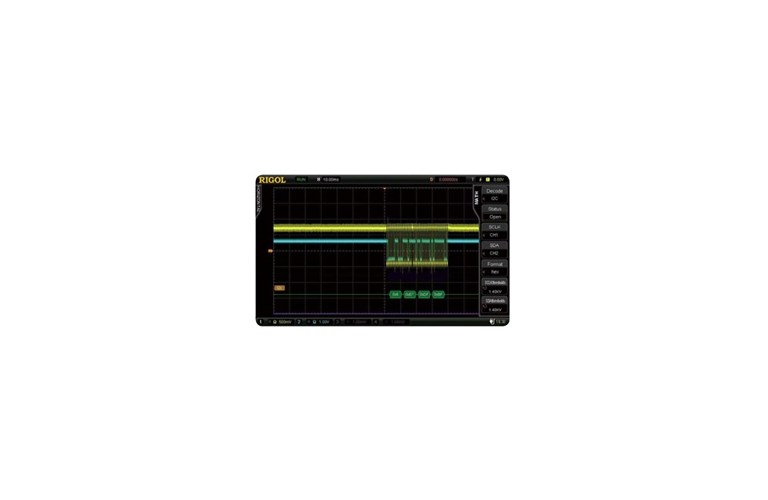Rigol Ds1000z Set Memory
How to Hack & Upgrade a Rigol DS1054Z Digital Oscilloscope: The Rigol DS1054Z is a very popular, entry level 4-channel Digital Storage Oscilloscope. It features a real-time sample rate of up to 1 GSa/s and a bandwidth of 50 MHz. The particularly large TFT color displays are very easy to read. Thanks to an. RIGOL DS1000Z Quick Guide 19 When using TRIGGER LEVEL to modify the trigger level, the trigger level value will change with the up and down of. Note: In slope trigger, runt trigger and windows trigger, there are two trigger level labels (and ). CH1 Vertical Scale Display the voltage value per grid of CH1 waveform vertically.
The DS1000Z/MSO1000Z Series is the new economic level Digital Oscilloscope from Rigol to meet the customer's applications with its innovative technology, industry leading specifications, powerful trigger functions and broad analysis capabilities. The DS1000Z 4 channel oscilloscopes come in 50, 70 or 100 MHz versions with a 7 inch display and Rigol's UltraVision technology as well as a host of options. Add the optional analysis, decoding, deep memory, and integrated 2 channel waveform generator for a powerful 4 channel scope at an exceptional price. The Plus modes (available at 70 or 100 MHz) come with the MSO Logic Analyzer port built in.
Simply purchase the MSO Upgrade Package accessory at a later date to turn a DS1000Z Plus into a fully equipped equivalent bandwidth MSO1000Z.
Rigol Oscilloscope Manual
Long Memory Storage with Rigol OscilloscopesSome Digital scopes offer the capability of capturing waveforms in Long Memory mode. Utilizing the long memory, Rigol scopes can capture complex signals in great detail over extended time periods. This allows an observer to examine high frequency effects within the captured waveform.How to use Long Memory Mode on the DS1000D/E Series scopes? Enter the Acquire menu by pressing the Acquire button Set the Memory Depth field to Long MemorySampling rate and Long Memory:Using the DS1000E and DS1000D Series Rigol digital scopes, users can access the long memory mode to get up to 512Kpts in dual channel mode and up to 1Mpts in single channel mode.
In comparison, standard memory depth for oscilloscopes range from 1000pts - 16Kpts. This high sampling rate is a big advantage when observing signals where the application requires capturing a longer waveform, but also needs to confirm higher frequency components within the signal. The best way to visualize these higher frequency components is to use the zoom feature. Download aplikasi screen recorder. By pushing the Horizontal knob, you can enter zoom mode.
In this screen shot you see a 0.5 second waveform in yellow across the top. In the lower section we have zoomed in to 10 usec/division. Since we are sampling in normal mode you can see the distance between two data points. A straight line connects data points and you can see where the signal rises between samples and is clearly being linearly interpolated. On the DS1000D/E Series scopes this normal mode operation has 16 Kpts per wave. Since the overall wave is set to 50 msec/div the 10 divisions across the screen make the wave 0.5 seconds. 16 Kpts spread across 0.5 seconds means there is one sample approximately every 32 usec.

This is confirmed by the screen shot.Using the method above to switch the scope to deep memory mode we can see the increased sampling rate below. In this image the increased data rate is seen by observing the real shape of the rise time. Now with the increased sampling we have 1 million points over 0.5 seconds for one sample about every 500 nsec.The table below shows the memory capabilities of all Rigol Oscilloscope series.capabilities above in 1 channel mode, within maximum sampling speedsIn conclusion, memory depth is an important feature to consider when selecting an oscilloscope because high frequency components can be important to the analysis, triggering, and monitoring of signals.
Memory depth combined with maximum sampling rates, waveform acquisition rates, and an oscilloscope’s display quality all impact the overall ease of capturing and analyzing data with your oscilloscope.